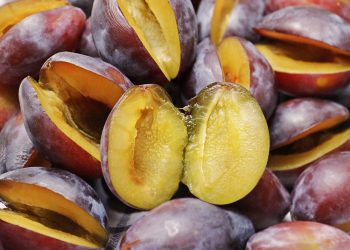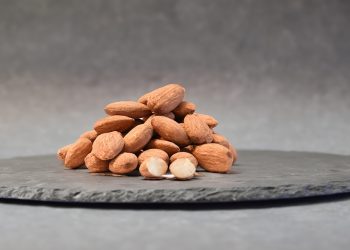Plant-based proteins are not just a trend; they’re a vibrant, essential part of a healthy lifestyle. If you’re looking to enhance your health and nourish your body, these protein-packed powerhouses might just be the key. Why does this matter to you? Because incorporating plant-based proteins into your diet can transform your energy levels, support your immune system, and keep your heart happy.
Contents
- Understanding Plant-Based Proteins
- 1. Lentils: The Mighty Pulse
- 2. Quinoa: The Complete Protein
- 3. Chickpeas: The Versatile Legume
- 4. Edamame: The Young Soybean
- 5. Chia Seeds: Tiny but Mighty
- 6. Hemp Seeds: The Nutritional Powerhouse
- 7. Peas: The Green Protein
- How to Incorporate Plant-Based Proteins into Your Diet
- The Benefits of a Plant-Based Protein Diet
- The Bottom Line
- FAQ
Understanding Plant-Based Proteins
Plant-based proteins come from a variety of sources, including fruits, vegetables, legumes, nuts, and grains. They offer a wealth of benefits, from essential amino acids to fiber, vitamins, and minerals. Unlike animal proteins, plant proteins can be easier to digest and are often lower in saturated fat. This means you can feel great about what you’re putting into your body.
Why should you care? Because your health is your wealth. And what you eat has a profound impact on how you feel, perform, and thrive every day.
1. Lentils: The Mighty Pulse
Lentils are a powerhouse of plant-based protein. With about 18 grams of protein per cooked cup, they’re not just filling; they’re also incredibly versatile. You can toss them into soups, salads, or even make a delicious lentil loaf.
Why you need them:
- Packed with fiber, they aid digestion.
- Rich in iron, keeping your energy levels high.
- Full of antioxidants, which combat free radicals.
2. Quinoa: The Complete Protein
Quinoa is often hailed as a superfood, and for good reason. It’s one of the few plant foods that provides all nine essential amino acids, making it a complete protein. With about 8 grams of protein per cooked cup, it’s perfect as a base for salads or bowls.
Why you need it:
- Gluten-free, making it a great option for those with sensitivities.
- High in magnesium, which supports muscle function.
- Contains anti-inflammatory properties.
3. Chickpeas: The Versatile Legume
Chickpeas, or garbanzo beans, are incredibly versatile. Whether you’re making hummus, tossing them into a salad, or roasting them for a crunchy snack, they deliver about 15 grams of protein per cooked cup.
Why you need them:
- Excellent source of fiber, helping to keep you full.
- Lowers cholesterol levels and promotes heart health.
- Rich in vitamins and minerals like folate and manganese.
4. Edamame: The Young Soybean
Edamame is a delightful snack or addition to your meals, offering around 17 grams of protein per cup. These young soybeans are not just tasty; they’re also packed with nutrients.
Why you need them:
- Contains healthy fats that support brain health.
- High in antioxidants, which help fight inflammation.
- Supports bone health with its calcium and iron content.
5. Chia Seeds: Tiny but Mighty
Chia seeds may be small, but they are mighty in terms of nutrition. Just two tablespoons contain about 4 grams of protein, along with a fantastic dose of omega-3 fatty acids, fiber, and antioxidants.
Why you need them:
- Promote hydration and help you feel full longer.
- Support digestive health due to their high fiber content.
- Easy to add to smoothies, oatmeal, or yogurt.
6. Hemp Seeds: The Nutritional Powerhouse
Hemp seeds are a fantastic source of protein, offering about 10 grams per 3 tablespoons. They’re also rich in omega-3 and omega-6 fatty acids, making them an excellent choice for heart health.
Why you need them:
- Improve skin health with their anti-inflammatory properties.
- Support muscle recovery after workouts.
- Great for smoothies, salads, or even sprinkled on toast.
7. Peas: The Green Protein
Green peas may seem simple, but they pack a punch with about 9 grams of protein per cooked cup. They’re often overlooked, but these little green gems can easily be added to a variety of dishes.
Why you need them:
- High in fiber, which aids digestion.
- Contain vitamins A, C, and K for overall health.
- Support weight management by keeping you satisfied.
How to Incorporate Plant-Based Proteins into Your Diet
Now that you know about these amazing plant-based proteins, how do you start incorporating them into your meals? Here are some practical tips:
- Start with Breakfast: Add chia seeds or hemp seeds to your smoothie or oatmeal.
- Snack Smart: Keep roasted chickpeas or edamame on hand for a quick protein-rich snack.
- Lunch or Dinner: Use lentils or quinoa as a base for salads or bowls. Toss in some veggies and a delicious dressing.
- Experiment: Don’t be afraid to try new recipes. Make a lentil soup, a quinoa salad, or chickpea curry.
The Benefits of a Plant-Based Protein Diet
Embracing plant-based proteins isn’t just about what you gain; it’s also about what you lose—like unnecessary calories, unhealthy fats, and the risk of chronic diseases. Here are some additional benefits:
- Weight Management: Plant proteins are often lower in calories and higher in fiber, helping you feel full and satisfied.
- Heart Health: Many plant proteins can lower cholesterol levels, reducing the risk of heart disease.
- Better Digestion: The fiber content in these proteins promotes digestive health, keeping your gut happy.
The Bottom Line
Incorporating plant-based proteins into your diet can be a game changer for your overall health. Not only do they provide essential nutrients, but they also support sustainable eating practices that are kinder to our planet.
So why wait? Start experimenting with these 7 plant-based proteins today and watch how they can boost your health and well-being. Remember, your body deserves the best.
FAQ
Q: Can I get enough protein from a plant-based diet?
A: Absolutely! With a variety of plant-based proteins, it’s easy to meet your protein needs.
Q: Are plant-based proteins complete proteins?
A: Some, like quinoa and soy, are complete proteins. Others can be combined for a complete amino acid profile.
Q: How do I cook with these proteins?
A: Many can be easily added to salads, soups, or smoothies. Explore recipes that highlight their flavors.
Make the choice today to nourish your body with these incredible plant-based proteins, and feel the difference they can make in your life.
Get Your FREE Natural Health Guide!
Subscribe now and receive our exclusive ebook packed with natural health tips, practical wellness advice, and easy lifestyle changes — delivered straight to your inbox.















